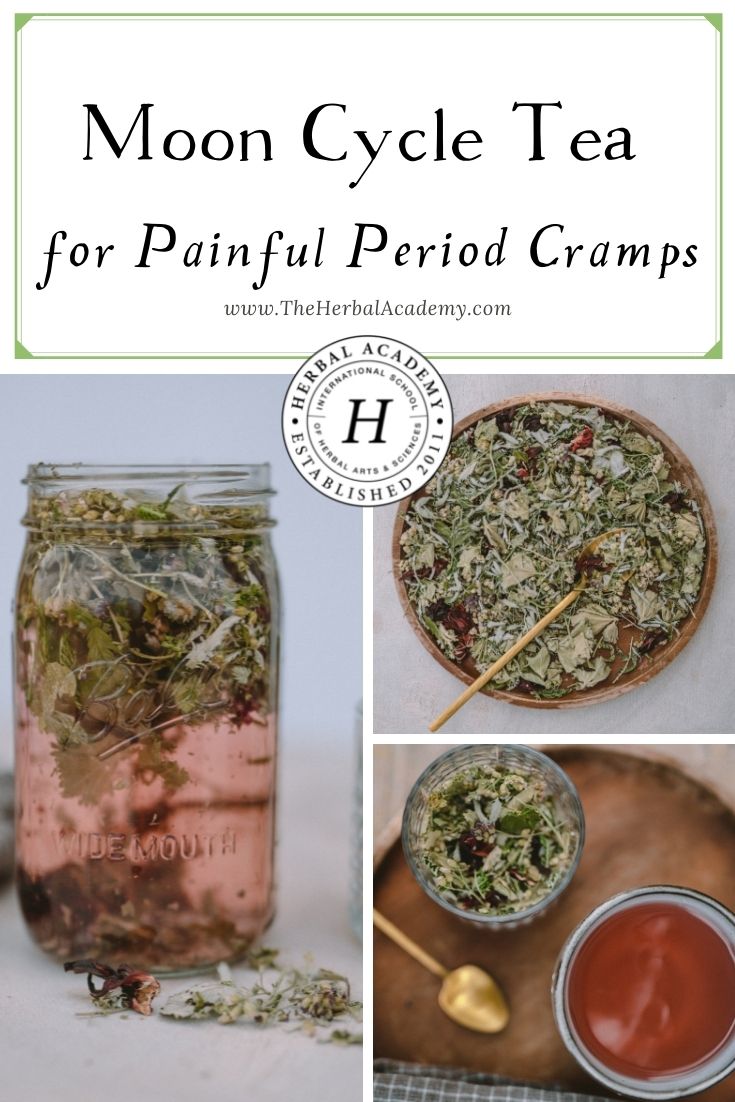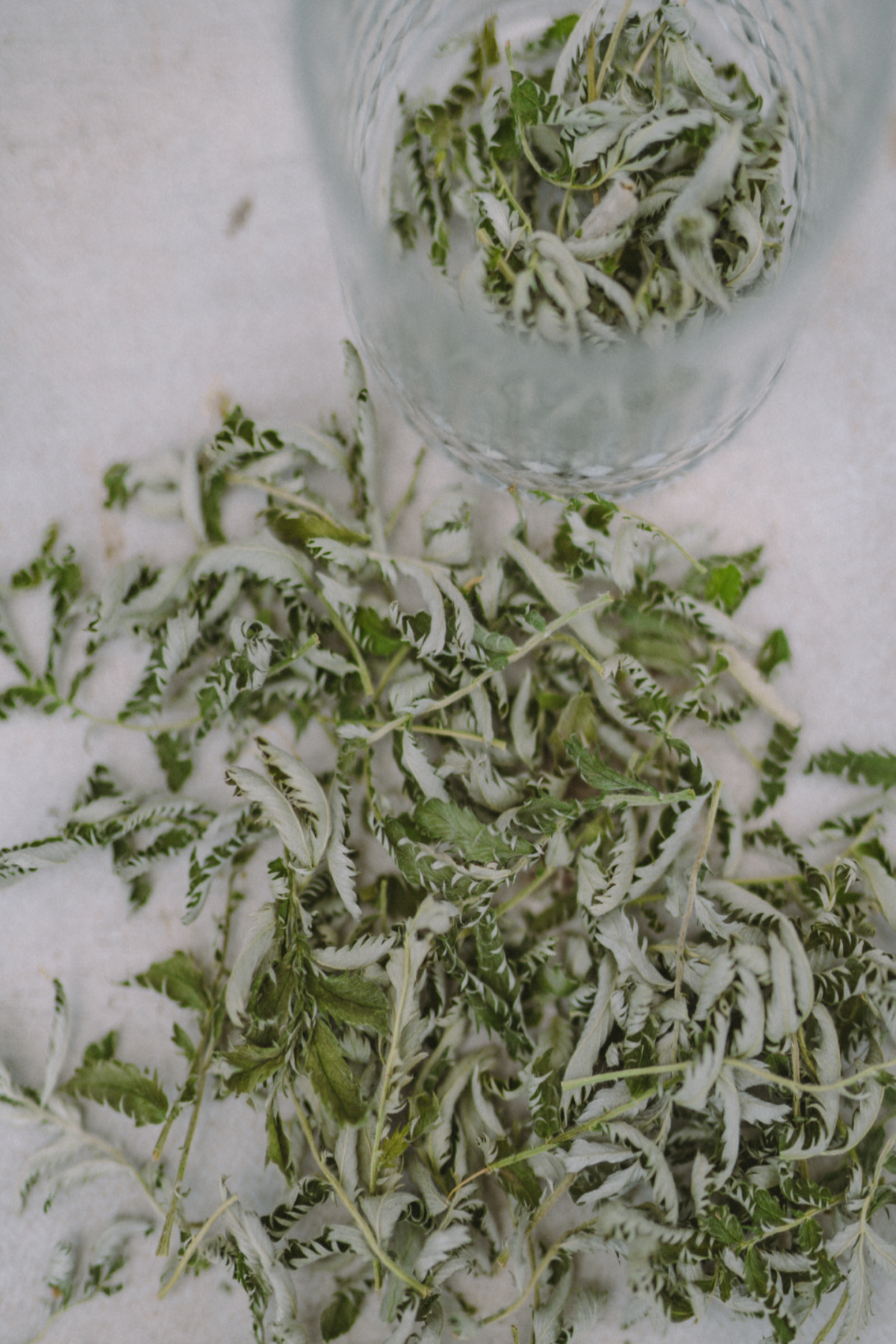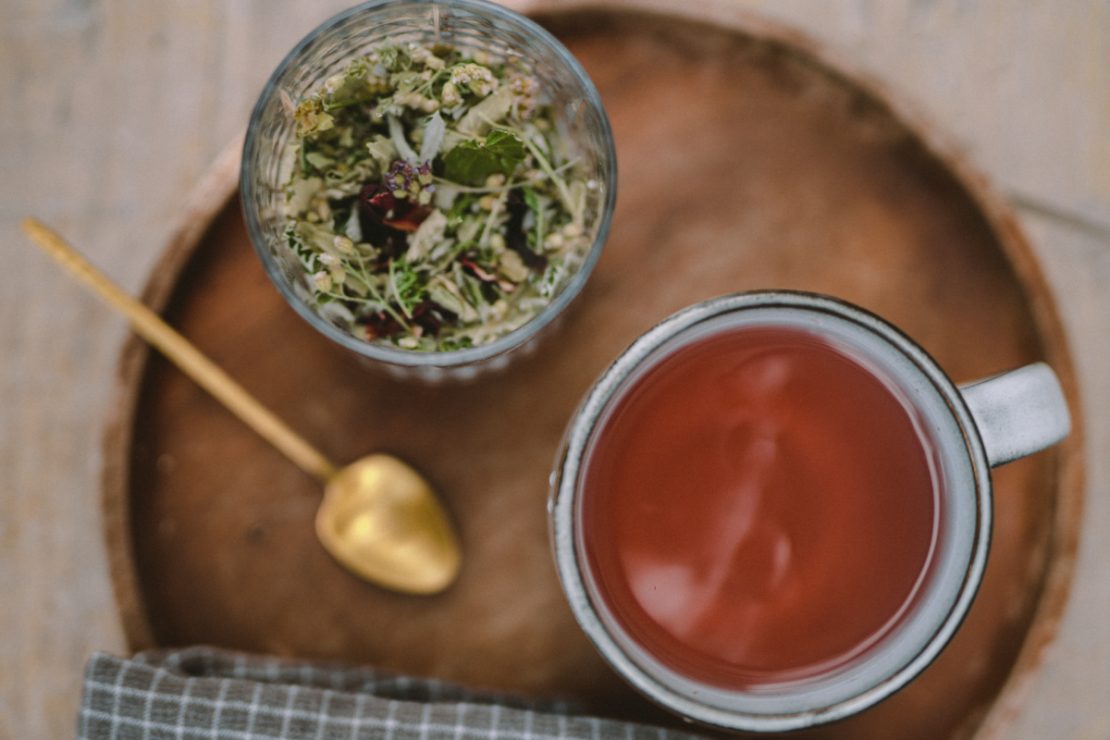
Moon Cycle Tea for Painful Period Cramps
Many people have experienced painful period cramps at some point. Period cramps may be anywhere from mild to debilitating, making someone want to stay in bed all day long. Severe period pain is not normal and warrants a professional assessment as it can be a sign of conditions such as endometriosis. Mild to moderate pain during periods is familiar to many people. The good news is that this is an imbalance that can be helped! Nature offers many herbal allies for easing pain and gently supporting discomfort associated with the menstrual cycle.
Want to learn about supporting herbs for the moon cycle, as well as how you can support your womb with a lovely Moon Cycle Tea during this special time of the month? Read on and consider sharing this recipe with someone who you think might benefit!
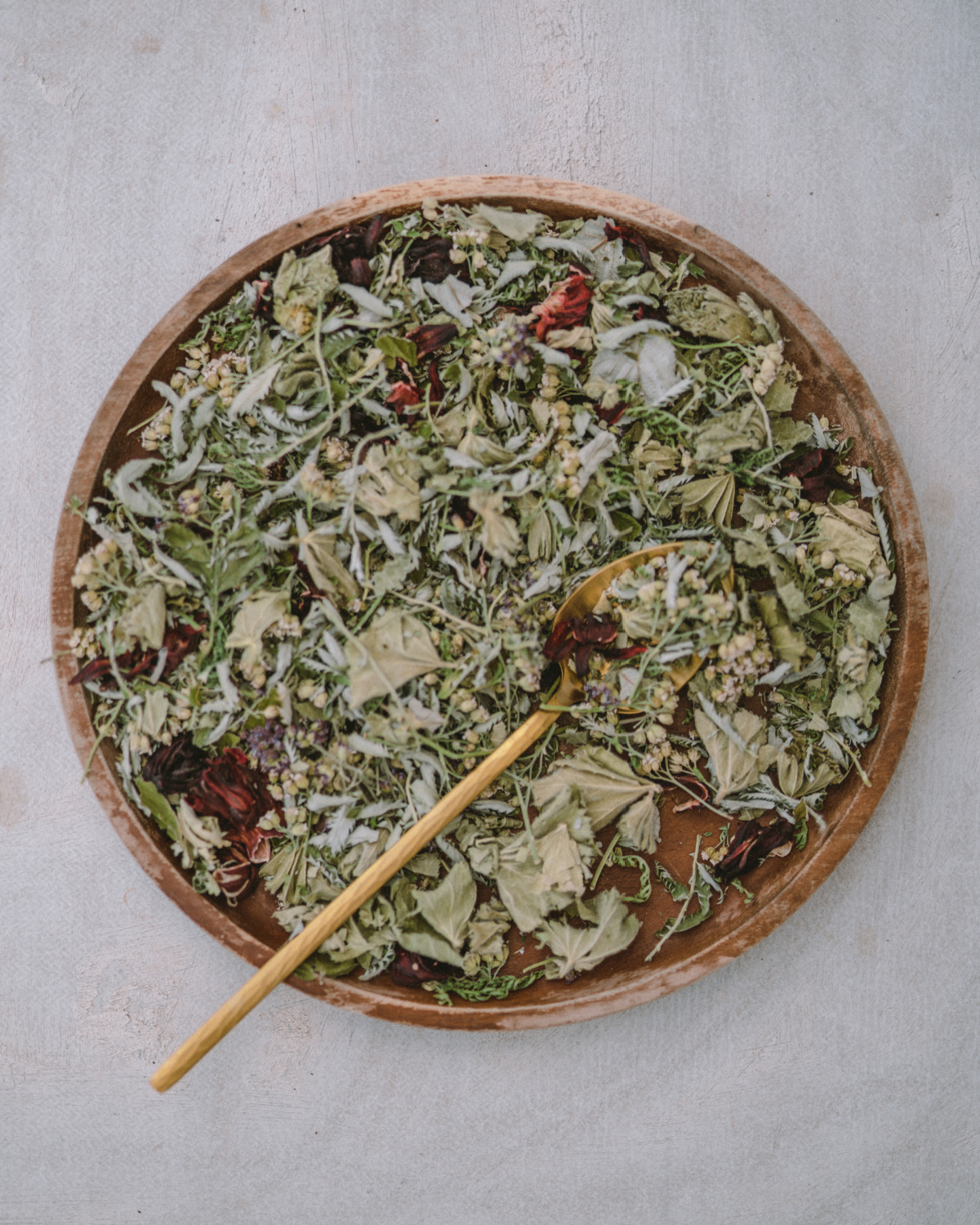
Traditional Herbs to Sooth Painful Period Cramps
Let’s have a look at traditional herbs that have been used for ages for their hormone-balancing and pain-soothing properties. Remember to always thoroughly research each herb you choose so that you are aware of any personal safety concerns or contraindications. (Or consult with a trusted herbalist for additional guidance.)
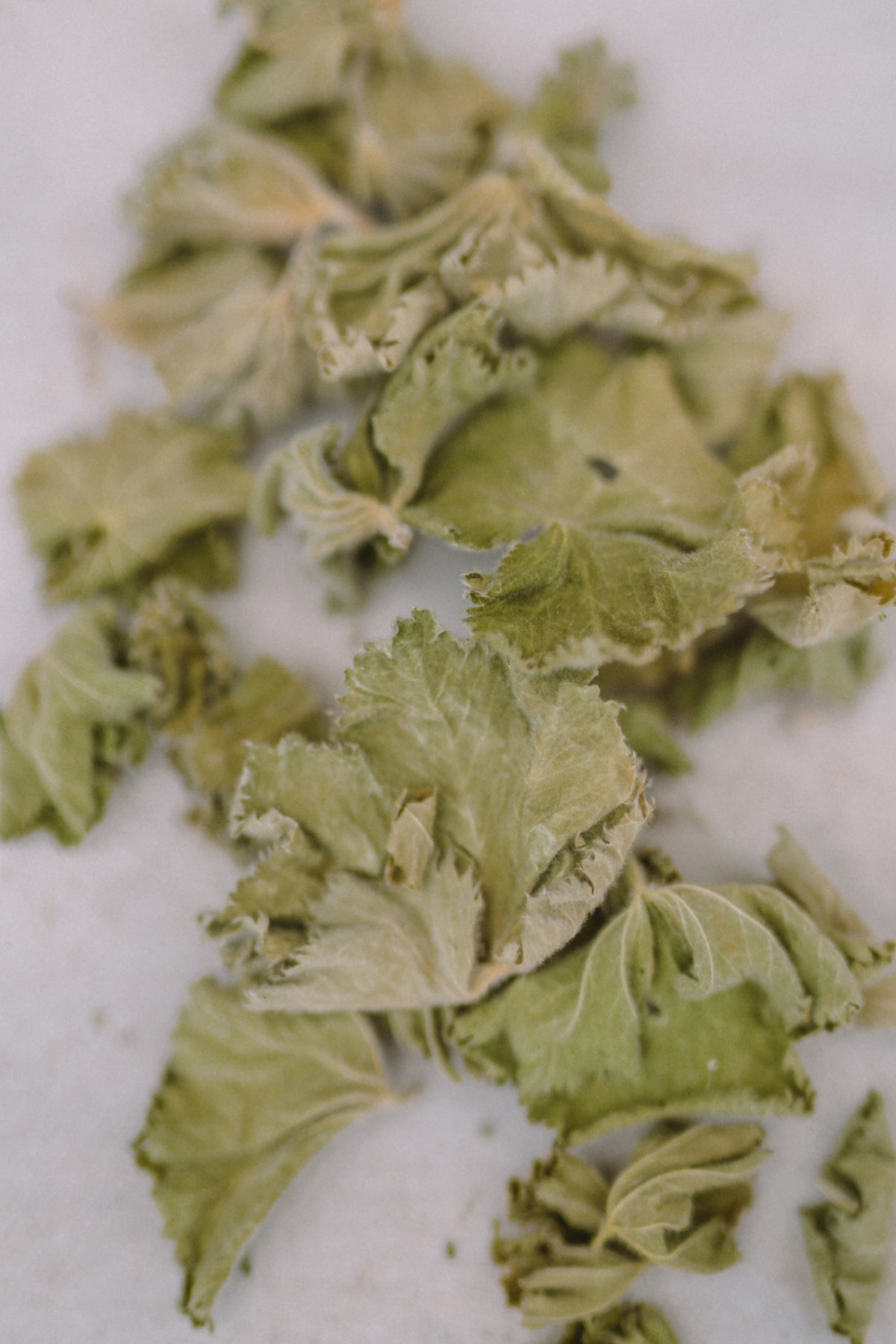
Lady’s Mantle – Alchemilla vulgaris (Leaf)
Lady’s mantle is known as one of the leading herbs for menstrual issues. This common name comes from the German designation Frauenmantel, so-called because of the folds in the leaves that resemble a woman’s cloak.
In folk medicine, Lady’s mantle has been used for menstrual irregularities, and there is some phytochemistry validation of this use. Tannins may have an influence of slowing heavy menstrual flow. Salicins in the leaf may alleviate menstrual pain (Gladstar, 1993; Wood, 1997).
Aqueous, that is water preparations similar to infusions and decoctions, and alcoholic extracts of women’s mantle also show a vasorelaxant and blood pressure-lowering effect, which may justify its use for menstrual headaches (Takir et al., 2015).
All in all, it’s a great herb for hormone balance and has been used especially for issues related to menstruation, for thousands of years!
Silverweed – Potentilla anserina (Leaf)
This herb is also called “cramp herb” because of its cramp-soothing properties. The actual name silverweed comes from its silver shimmering backside.
Silverweed works especially well for those who tend toward nervousness and who experience more intense cramps under the influence of stress.
In one medical study, 25 individuals who were unable to work due to severe period symptoms were given silverweed over the course of several months. Half of the patients experienced almost complete freedom from their symptoms (Harnischfeger & Stolze, 1983). This study indicates that silverweed is—most likely due to its tannin content—a great herb for easing painful period cramps.
Furthermore, silverweed contains phenolic compounds (PCs), that are considered to possess anti-inflammatory properties (Piront, 2010). By downregulating inflammation, prostaglandin biosynthesis can be reduced and therefore a woman experiences less period pain.
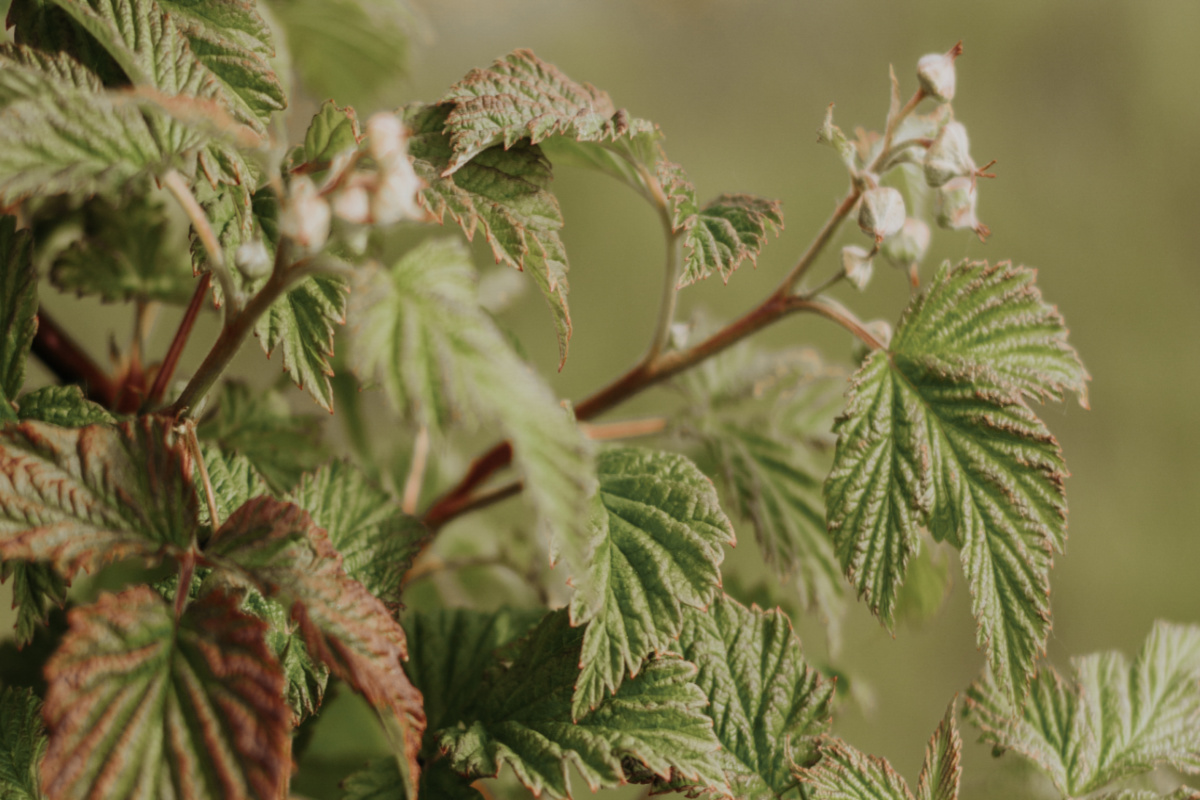
Raspberry – Rubus ssp. (Leaf)
Raspberry leaves are vitamin- and mineral-rich. Their vitamin E, C, B complex, and magnesium content make them a great help for menstrual issues. Raspberry is also a rich source of iron, and therefore especially a good choice for individuals who experience heavy menstrual bleeding.
These green leaves with a silver-white back strengthen the endocrine system and balance hormones; they also help to establish a rhythm, and can regulate or even help restore ceased menstrual cycles in younger individuals (Berger, 1996). The womb-strengthening abilities of fragrine, an alkaloid that acts directly on smooth muscle, helps the uterus to contract more smoothly, reducing cramping during menstruation (Bennett, 2014), and the astringency of raspberry helps lessen heavy menstrual bleeding.
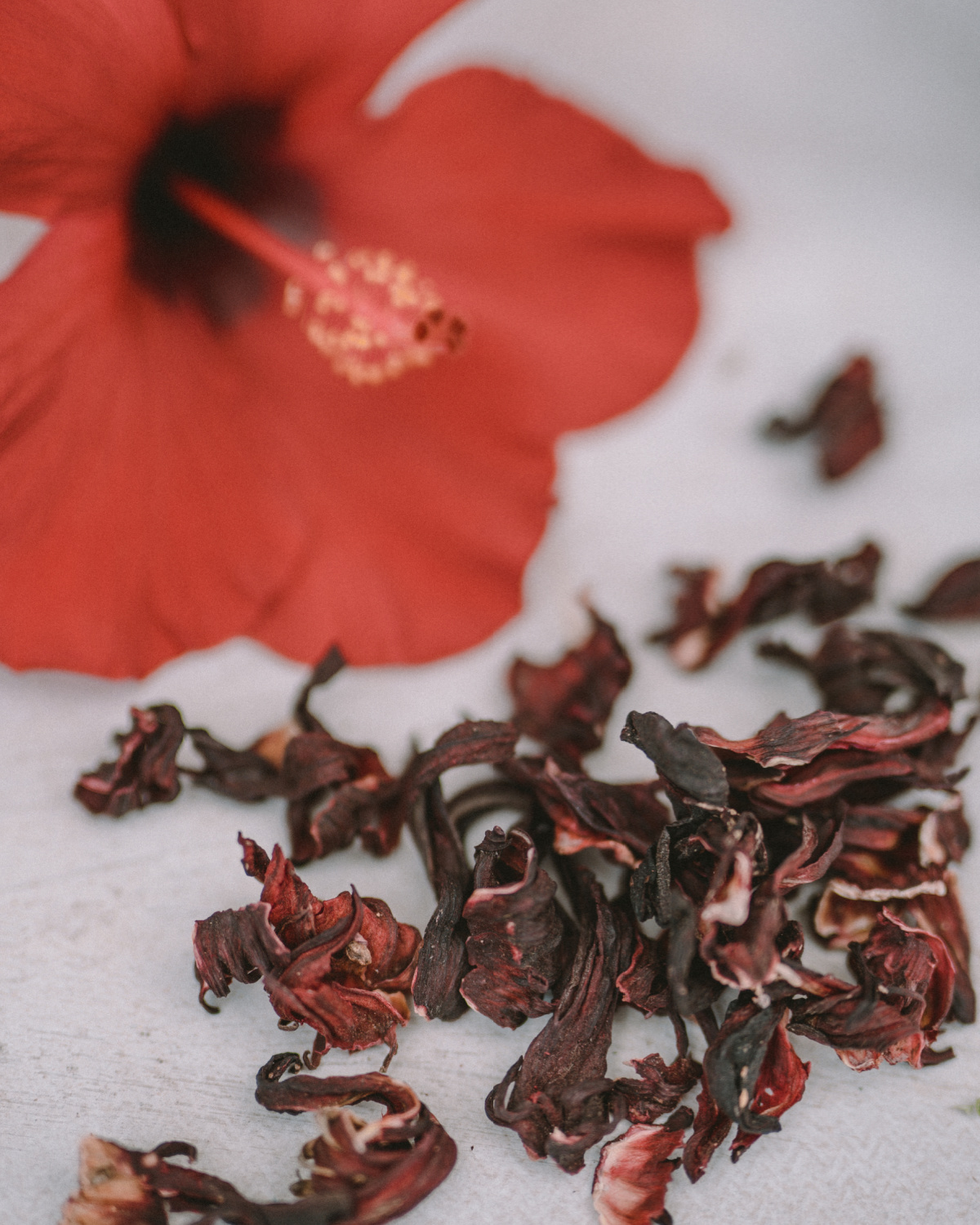
Hibiscus Flower – Hibiscus sabdariffa (Calyces)
Hibiscus flowers not only add a nice flavor and a red color, they also contain important nutrients, such as iron, magnesium, vitamin C, and anti-inflammatory polyphenols. These nutrients and phytochemicals are helpful for menstrual support (Foster and Tyler, 1999; Mahadevan, 2009).
If you want to use this herb, make sure to use the deep red and tart calyces instead of the petals. This part of the flower contains much more of the active ingredients. If you like, you can add a few petals of course, too.
Hibiscus is also known for balancing hormones. Its astringent properties are useful for regulating menstrual flow and checking excessive bleeding. Its antispasmodic action is especially soothing for painful period cramps. That said, please be aware that there are hundreds of species of hibiscus, but the Hibiscus sabdariffa used in herbalism has much smaller blossoms than the common ornamental garden hibiscus.
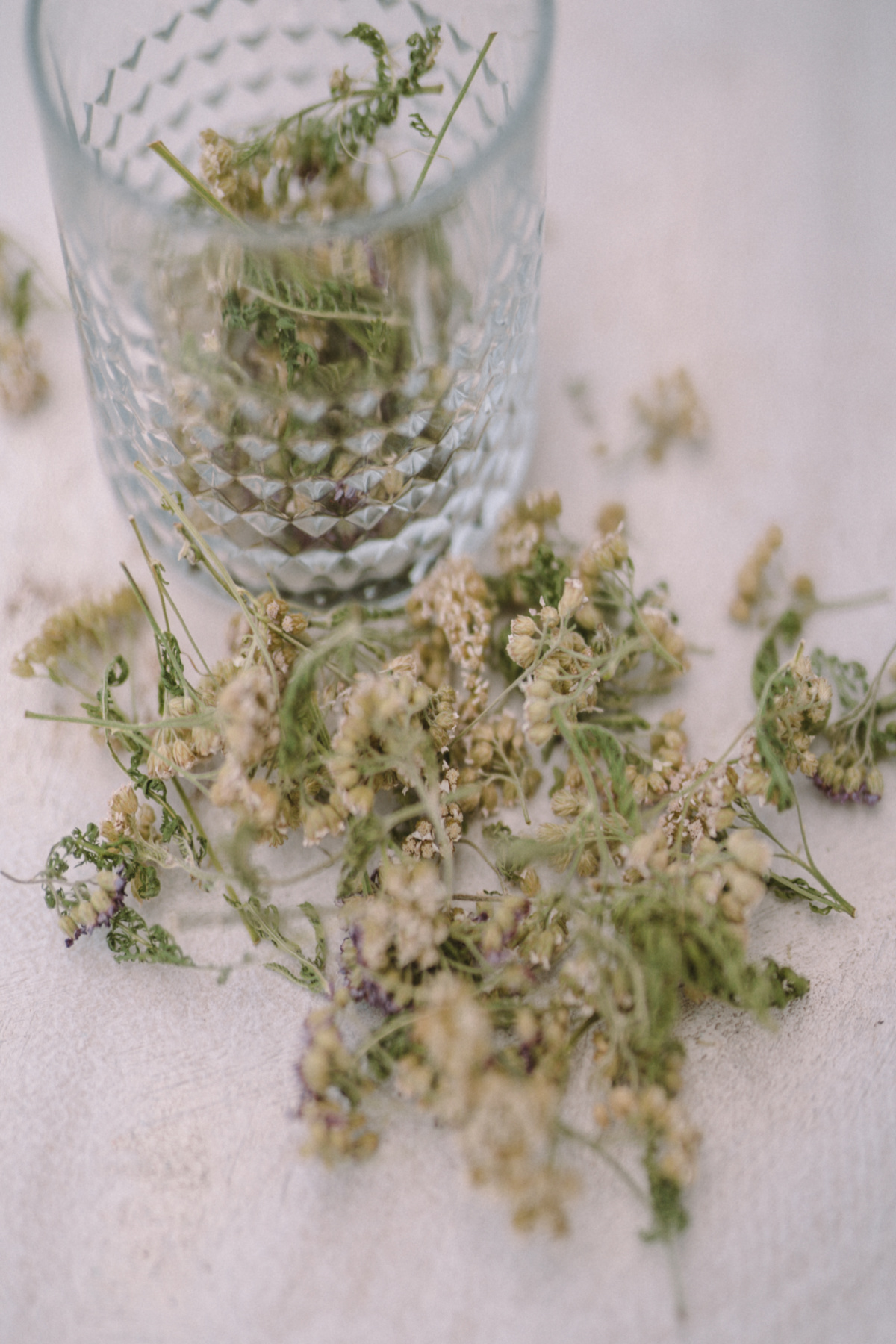
Yarrow – Achillea millefolium (Aerial parts)
The leaves and flowers of yarrow are known to reduce painful period cramps due to their relaxing, astringent and antispasmodic nature.Yarrow is also helpful for lessening heavy menstrual flow (Edwards, 2000). Yarrow´s astringent and anti-inflammatory properties are especially important for soothing painful period cramps.
To illustrate this application, in a clinical trial, students with primary dysmenorrhea were randomly divided in two groups. One half received a placebo; the other half yarrow in the form of tea prepared from yarrow in teabags. The yarrow (or placebo) was administered for three days for two menstrual cycles. The group who had the yarrow tea had significantly less pain than the placebo group (Ensiyeh & Bita, 2013).
If you wild harvest yarrow, it’s especially important to avoid confusion with umbellifers. Perhaps you’ll be lucky to find the rare wild variety of pink yarrow!
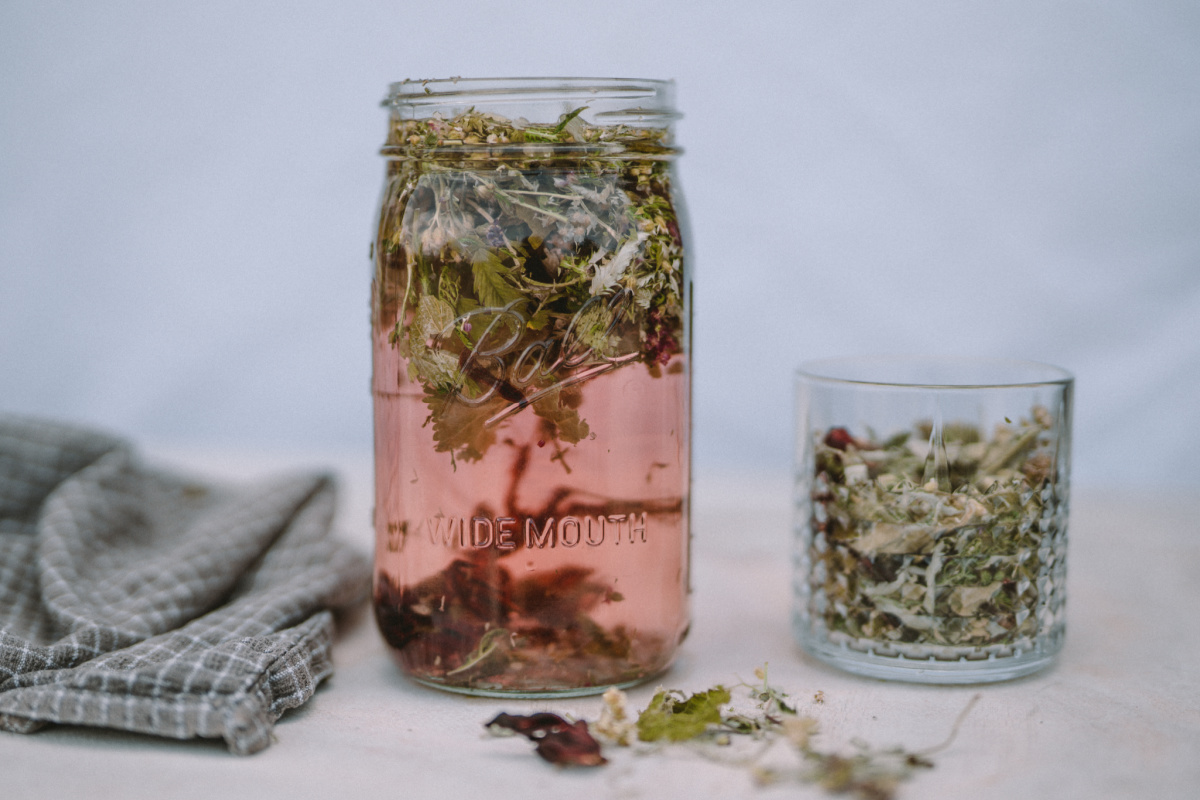
Painful period cramps may be common, but that doesn’t mean they can’t be helped. This Moon Cycle Tea will need a few cycles to work its magic, but might be just the thing to help balance the menstrual cycle and alleviate pain. 1 teaspoon lady’s mantle leaf (Alchemilla vulgaris), dried or fresh Prepare a teapot with a strainer and bring the water to boil.
Place your herbs in the strainer in the meantime.
Pour over with water and leave to infuse for 10 minutes.
To Use: Drink this Moon Cycle Tea throughout the day. To help prevent painful period cramps, start drinking the tea five days prior to your period and continue to drink it throughout your moon time.
Painful period cramps may be common, but that doesn’t mean they can’t be helped. The herbs discussed in this post can help you move to greater balance throughout your menstrual cycle, perhaps even resulting in less pain. Also, consider combining the Moon Cycle Tea with other holistic methods like acupuncture, nutrition, and supplements. When working with herbs to balance the menstrual cycle, it may take a little time. This Moon Cycle Tea will need a few cycles to work its magic, but always keep in mind to consult a physician if your period pain or bleeding is severe. REFERENCES
Bennett, R. R. (2014). The gift of healing herbs. Berkeley, CA: North Atlantic Books.
Berger, J.. (1998). Herbal rituals. New York, NY: St. Martin’s Press.
Edwards, G.F. (2000). Opening our wild hearts to the healing herbs. Woodstock, NY: Ash Tree Publishing.
Ensiyeh, J., & Bita, F., (2015). Effect of Achillea millefolium on relief of primary dysmenorrhea: A double-blind randomized clinical trial. Journal of Pediatric and Adolescent Gynecology. https://doi.org/10.1016/j.jpag.2014.12.008
Foster, S., & Tyler, V. (1999). Tyler’s honest herbal. New York, NY: MJF Books.
Gladstar, R. (1993). Herbal healing for women. New York, NY: Fireside.
Harnischfeger, G., Stolze, H.(1983): Bewährte Pflanzendrogen in Wissenschaft und Medizin, Notamed Verlag, Bad Homburg und Melsungen
Neil Piront, Julie Meurice, Olivier Toussaint, Yves-Jacques Schneider ,(2010):
Anti-inflammatory effects of dietary phenolic compounds in an in vitro model of inflamed human intestinal epithelium https://pubmed.ncbi.nlm.nih.gov/20816778/
Takir S., Altun, H., Süzgec, S., Sezgi, B., Mat, A., & Uydes-Dogan, B. (2015). Vasorelaxant and blood pressure lowering effects of Alchemilla vulgaris: A comparative study of methanol and aqueous extracts. Pharmacognosy Magazine, 11(41), 163-169. https://doi.org/10.4103/0973-1296.149733Moon Cycle Tea
Adapted from Woman’s Health Herbalist by Eva-Maria Dillitz @sunfoodstories
1 teaspoon silverweed leaf (Potentilla anserina), dried or fresh
1 teaspoon raspberry leaf (Rubus ssp.), dried or fresh
1 teaspoon hibiscus calyces (Hibiscus sabdariffa), dried or fresh
1 teaspoon yarrow flowers and/or leaves (Achillea millefolium), dried or fresh
2 cups water
You can enjoy this Moon Cycle Tea blend on its own or add some hibiscus flower syrup to add a sweet flavor.
In Closing,
